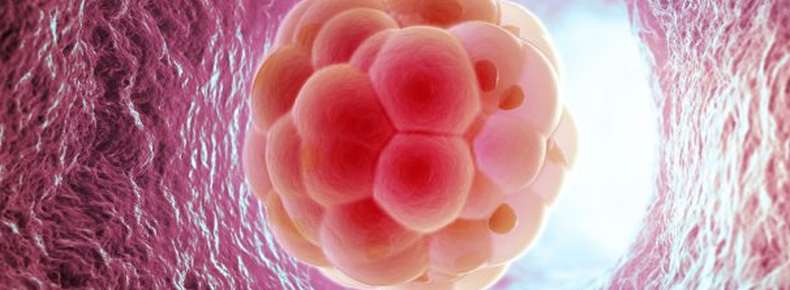Mitochondria are involved in the regulation of multiple cellular processes, including apoptosis, amino acid synthesis, calcium homeostasis, and the generation of energy in the form of ATP via the process of oxidative phosphorylation. Therefore, mitochondria are considered as the cell’s main power houses. Mitochondria are unique compared to other cellular organelles in that they contain one or more copies of their own genome. The mitochondrial DNA (mtDNA) is a circular double stranded molecule of 16.6 kb in size. Genes encoded by the mtDNA produce subunits of several complexes with key functions within the electron transport chain. This means that mtDNA genes have a direct role in cellular metabolism.
Mammalian embryos inherit mitochondria (and mtDNA) exclusively from the population found in the oocyte. It is thought that embryo mtDNA amounts remain stable during the first three days of preimplantation development, with significant mtDNA replication being initiated once the embryo has undergone the first cellular differentiation into trophectoderm and inner cell mass and has become a blastocyst.
Preimplantation development is a dynamic and energy demanding process. Early embryos require adequate energy levels so that they can successfully progress through each cell division. This means that correct mitochondrial function and mtDNA gene expression are critical during the first few days of life.
There has been an increasing interest on the quantities of mtDNA of blastocyst stage embryos in the past few years. One such study (Fragouli et al., 2015) described relationships between mtDNA quantity, female age, embryo ploidy, and viability. This investigation employed a combination of quantitative real-time PCR and next generation sequencing to measure the mtDNA of human blastocyst stage embryos. The results obtained demonstrated that blastocyst stage embryos generated by reproductively younger women (aged up to 37 years) contained significantly lower mtDNA amounts, compared to embryos generated by reproductively older women (aged 38 years or over). It was also evident that aneuploid embryos had significantly more mtDNA, compared to euploid embryos. More interestingly, however, the assessment of mtDNA quantity in relation to embryo viability showed that blastocysts capable of implanting and leading to ongoing pregnancies and live births had significantly lower mtDNA quantities, compared to those which after transfer did not implant. An mtDNA quantity threshold was established, above which successful pregnancy after blastocyst transfer was rarely observed.
These findings were further confirmed in a large multicentre retrospective study using similar methodology for the mtDNA quantification (Ravichandran et al., 2017). Specifically, it was determined that approximately 10% of all euploid blastocysts of good morphology, which would be considered for transfer, had unusually high mtDNA quantities (above the established threshold), and were therefore of low implantation ability. mtDNA quantity was seen to be independent of embryo morphology, sex, as well as indication for preimplantation genetic testing for aneuploidy (PGT-A), although there seemed to be an influence of the referring IVF clinic on the mtDNA quantities of the blastocysts it generated.
The mtDNA quantity implantation threshold predictive value was assessed during a prospective blinded non-selection study (Fragouli et al., 2017). The negative predictive value of mtDNA quantification (failure of ongoing pregnancy per embryo with elevated mtDNA levels transferred) was 100%, whereas the positive predictive value (ongoing pregnancy/delivery per embryo with normal mtDNA levels transferred) was 64%. Combination of the different datasets suggested that mtDNA quantification may enable the selection of euploid embryos with the highest implantation potential. This could in turn improve clinical outcomes after IVF with PGT-A by 5%-10%.
Similar observations in the human and the mouse were reported by other investigations (Diez-Juan et al., 2015; Spinella et al., 2016; Tao et al., 2017), although there were some studies that were unable to show a clear relationship between mtDNA quantities and blastocyst implantation potential (Victor et al., 2017; Treff et al., 2017). These differences among investigations assessing embryonic mtDNA have led to significant debate about the usefulness of mtDNA quantification as a new biomarker of embryo viability.
It is of note that the biological mechanisms associated with the low implantation potential of blastocysts with elevated mtDNA quantities are not well understood. It is possible that embryos with elevated mtDNA levels are under some form of cellular stress and require additional energy as they attempt to resolve it. An increase in energy could be achieved by an increase of mitochondria (and mtDNA) replication, or a reduction of the mitophagy rate, allowing persistence of organelles that may have been eliminated. It is also possible that an increase in mitochondria (and mtDNA) represents a compensatory mechanism, employed when the existing mitochondria are not functioning properly. Studies assessing ATP production in blastocysts with unusually high mtDNA levels could provide an insight into the energy status of such embryos aiding, in this way, our understanding of this as yet unexplained phenomenon.





